El bordado con doble aplique es una técnica creativa que añade un aspecto dinámico y en capas a tus diseños.. Usando dos capas de tela., puedes introducir contrastes y texturas audaces que den vida a tus proyectos.
Este método no sólo mejora el atractivo visual de su trabajo sino que también ofrece infinitas posibilidades de personalización..
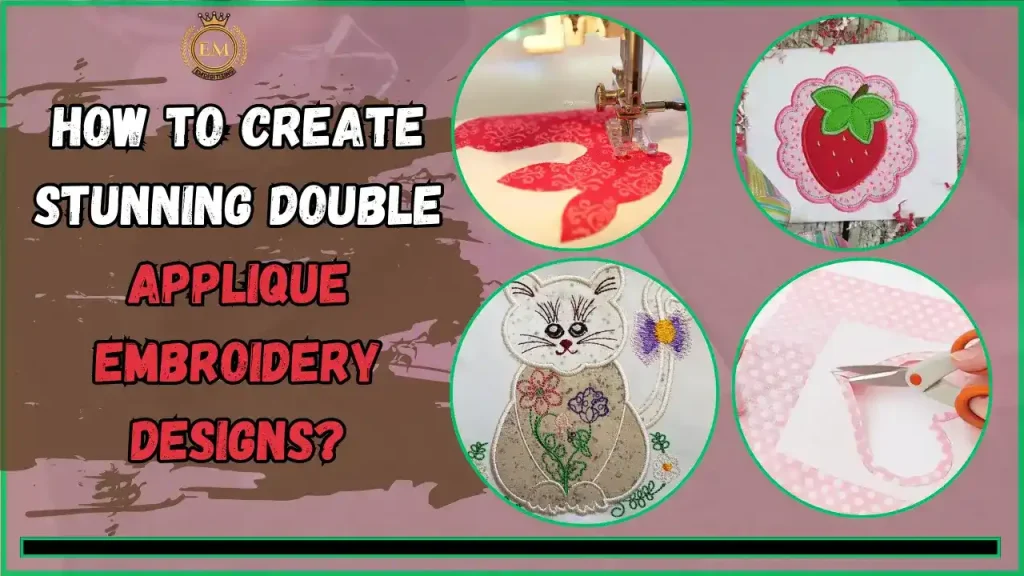
En este articulo, Exploraremos cómo crear fácilmente impresionantes diseños de apliques de bordado doble., dando a tus proyectos un acabado profesional y llamativo en todo momento.
Cómo crear impresionantes diseños de bordado con apliques dobles?
¿Qué es el bordado de doble aplique??
Apliques diseño de bordado es una forma divertida y creativa de agregar capas a tus diseños. Consiste en colocar dos piezas de tela encima de la tela base y coserlas para crear un diseño decorativo..
El resultado es un colorido, patrón texturizado que destaca. El aplique doble añade profundidad a tus proyectos y los hace lucir profesionales y únicos..
Materiales esenciales para crear bordados con apliques
Tener los materiales adecuados garantiza que tus diseños de bordado con doble aplique queden perfectos.. A continuación se muestra una lista de los materiales esenciales que necesitará.:
- Tela de apliques
- Tela base
- Estabilizador
- Red fusible
- Hilo de bordar
- Miniplancha
- Tijeras para apliques
Exploremos cada material y herramienta en detalle para comprender su importancia y cómo contribuyen a crear hermosos apliques y bordados.:
1. Tela de apliques
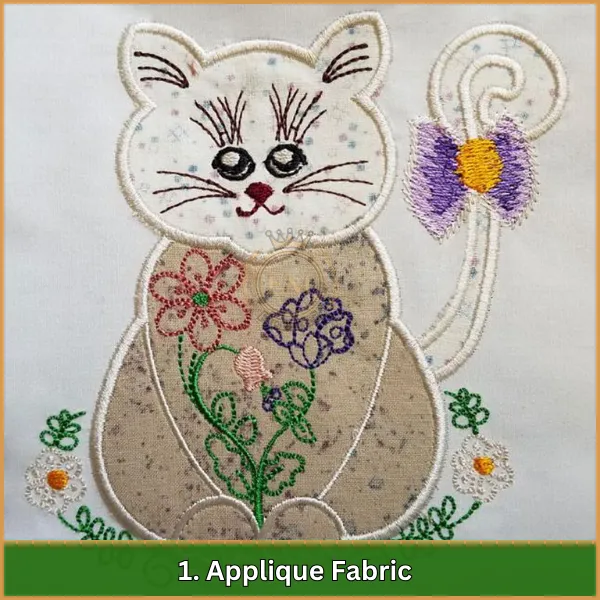
Para crear el diseño en capas, Necesitarás dos tipos de tela para apliques..
Elija telas que contrasten en color o textura con respecto a su tela base., como el satén, seda, o algodón, para resaltar las capas.
2. Tela base
Esta tela constituye la base para el diseño de su aplique.. Debe ser lo suficientemente resistente para soportar las capas adicionales.. Telas como el algodón o el lino son ideales para este fin., ya que mantienen bien su forma durante la costura.
3. Estabilizador
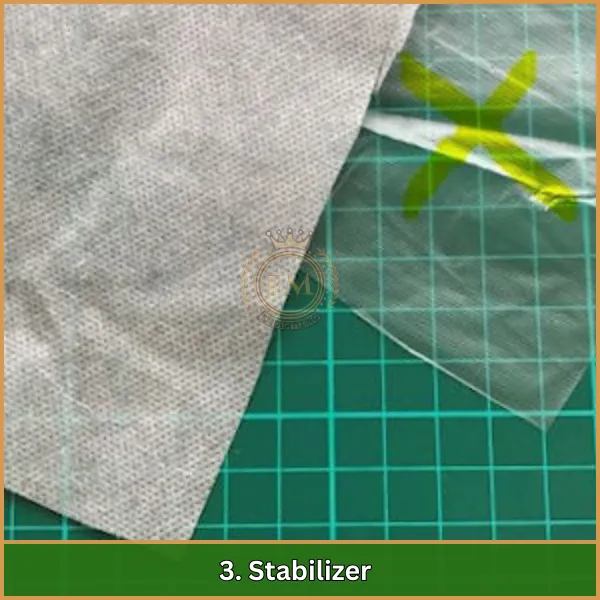
Los estabilizadores brindan soporte a la tela mientras cose, evitando amontonamientos o distorsiones.
Los estabilizadores desprendibles o recortables se utilizan comúnmente en proyectos de apliques para mantener todo suave y seguro..
4. Red fusible
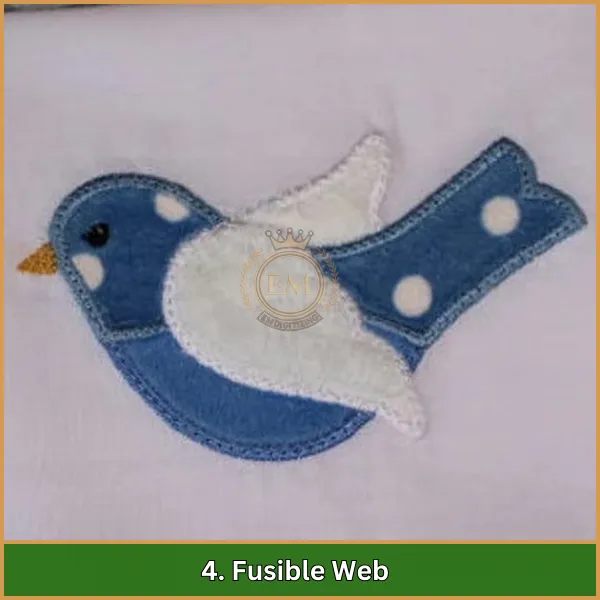
La red fusible actúa como adhesivo., sujetando temporalmente las piezas de apliques en su lugar antes de coser.
Es imprescindible para garantizar una colocación precisa y reducir el desplazamiento de la tela durante el proceso de costura..
5. Hilo de bordar
Utilice alta calidad hilos de bordar como poliéster o rayón para las costuras decorativas y de fijación. Estos hilos no sólo tienen un aspecto brillante sino que también son lo suficientemente fuertes como para sujetar la tela de forma segura en su lugar..
6. Miniplancha
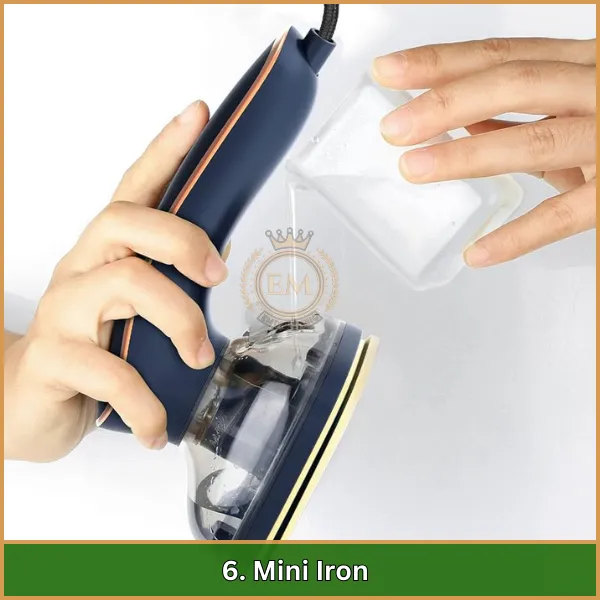
Una mini plancha es esencial para presionar pequeñas piezas de apliques en su lugar..
Su tamaño compacto le permite presionar con precisión la red fusible sin dañar las áreas circundantes de la tela..
7. Tijeras para apliques
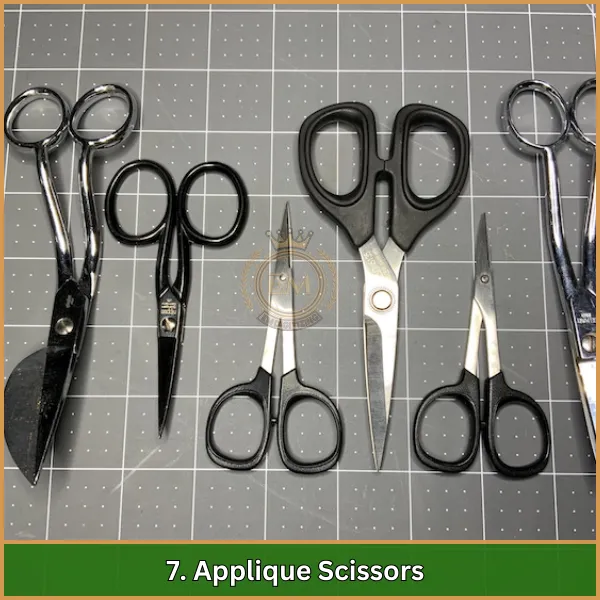
La precisión es clave en el trabajo de apliques., y las tijeras para apliques afiladas le ayudan a recortar el exceso de tela cuidadosamente alrededor de las puntadas de sujeción..
Invertir en tijeras de alta calidad garantizará la limpieza, bordes de aspecto profesional.
Cómo hacer bordado con doble aplique
Sigue estos pasos para crear un hermoso diseño de aplique doble:
1. Diseña tu patrón de apliques
Comience creando o eligiendo un patrón de aplique doble usando software de bordado. Asegúrese de que el diseño incluya capas para el efecto de doble aplique.. Guárdelo en un formato legible por máquina como .PES o .DST.
Si diseñar parece difícil o no tienes un software costoso, La digitalización electrónica puede ayudar. Ofrecemos alta calidad, asequible servicios de digitalización que te ahorran tiempo y esfuerzo.
2. Coloque su tela base en un bastidor
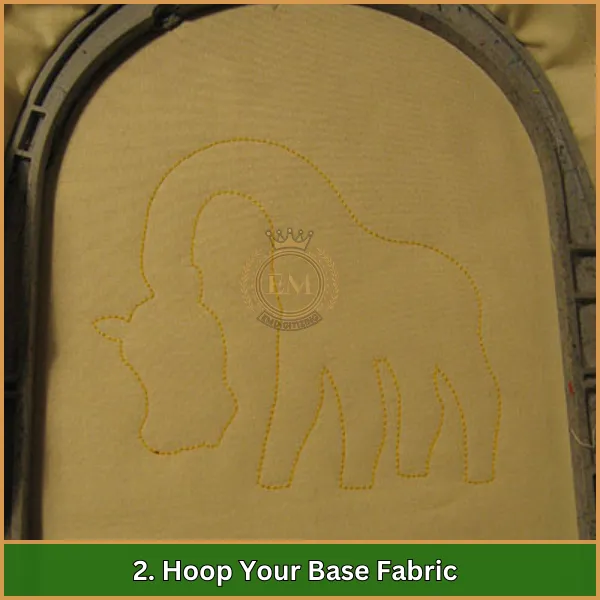
Coloque la tela base en el aro de bordado.
Asegúrese de que la tela esté tensa y suave para evitar arrugas o arrugas durante la costura..
3. Agregue estabilizador para soportar la tela
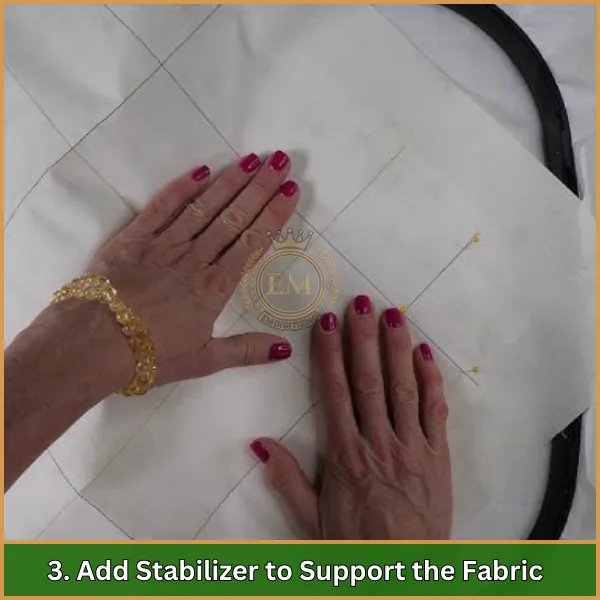
Desliza un estabilizador, como desgarrado o recortado, debajo de la tela con aros para mantenerla firme durante la costura.
Esto evitará que se muevan y se amontonen al bordar..
4. Coser el contorno de colocación
Cargue el diseño en su Maquina de bordar y coser el contorno de colocación. Esta puntada muestra dónde debes colocar la tela para apliques..
5. Recortar la tela de apliques
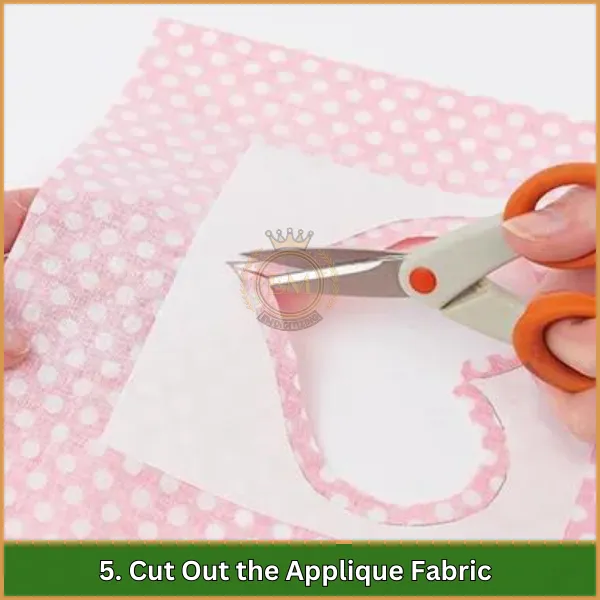
Corta las piezas de tela para apliques un poco más grandes que el contorno de colocación..
Esto permite que la tela cubra completamente el área a coser..
6. Adjunte una red fusible a la tela para apliques
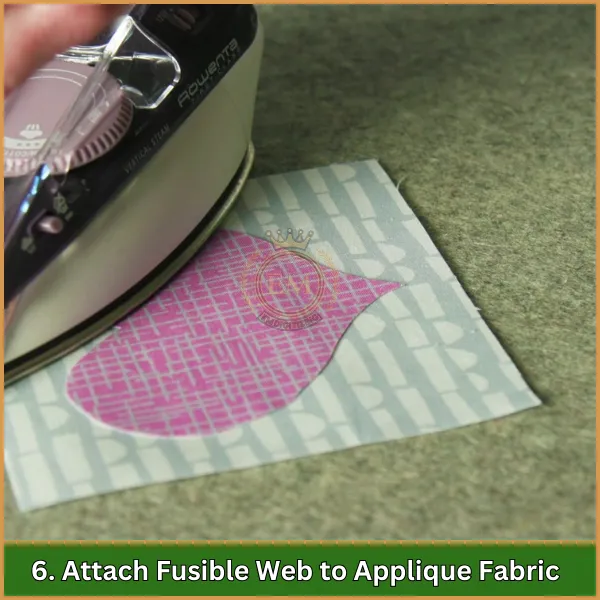
Corte la red fusible para que coincida con el tamaño de cada pieza de tela del aplique y plánchela sobre la parte posterior de la tela..
Esto actuará como adhesivo para mantener la tela en su lugar.. Una vez enfriado, retire el papel de respaldo.
7. Coloque y presione la primera capa de aplicación.
Coloque con cuidado la primera tela del aplique sobre la línea de colocación., asegurándose de que cubra el contorno. Presiónelo con una miniplancha para activar la red fusible y mantener la tela en su lugar..
8. Coser la puntada de hilván
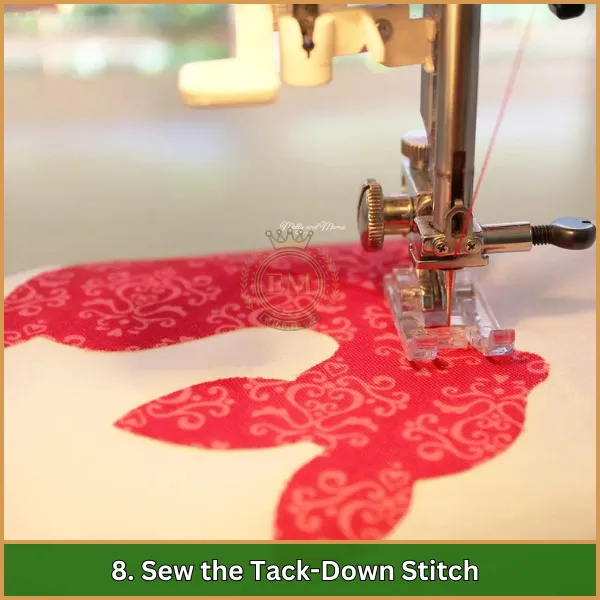
Regrese el bastidor a la máquina de bordar y cosa la puntada de hilván para asegurar la tela del aplique a la tela base..
9. Recortar el exceso de tela de apliques
Retire el aro de la máquina y use unas tijeras afiladas para recortar cualquier exceso de tela alrededor de la puntada de hilván.. Sea preciso para evitar cortar los puntos..
10. Agrega la segunda capa de aplique
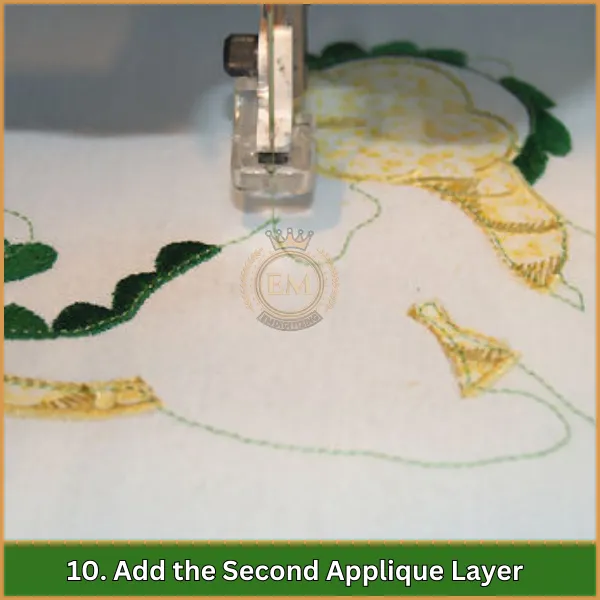
Para la segunda capa, repetir los pasos 5 a través de 9, Colocar la segunda tela de aplique sobre la primera para crear un efecto de capas..
11. Terminar con puntadas satinadas o en zigzag
Vuelva a colocar el aro en la máquina y use una puntada satinada o en zigzag para terminar los bordes de la tela del aplique.. Esto da una limpieza, aspecto pulido a su diseño.
12. Retire el estabilizador y limpie el diseño
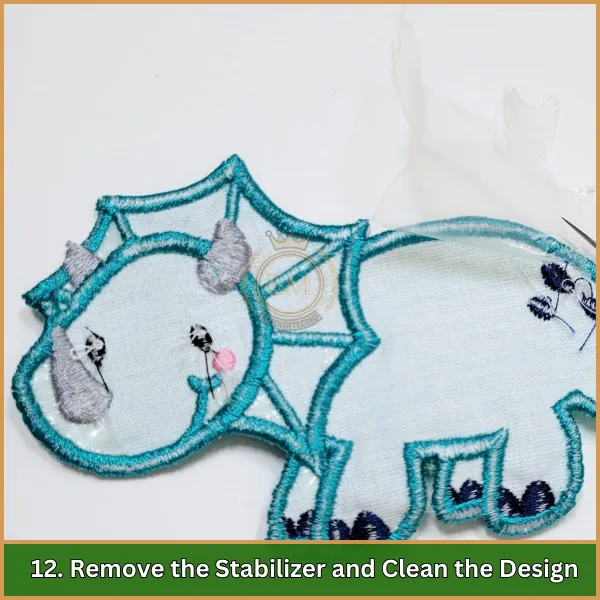
Una vez que se completa la costura, Retire o corte suavemente el exceso de estabilizador de la parte posterior del diseño..
Limpia los hilos sueltos para mantener tu diseño ordenado..
13. Inspeccionar y hacer ajustes finales
Examine su diseño terminado en busca de defectos o puntadas sueltas.. Recorta los hilos restantes o haz pequeños ajustes para asegurar que todo luzca perfecto..
Consejos útiles para el bordado de apliques dobles
A continuación se ofrecen algunos consejos útiles para la aplicación doble que pueden mejorar su proceso y sus resultados.:
- Utilice materiales de calidad: Elija tejido apretado, Telas de alta calidad tanto para la base como para los apliques para garantizar un acabado limpio..
- La estabilización es clave: Utilice siempre el estabilizador adecuado, como corte de peso medio, para sostener la tela durante la costura.
- Aplicación web fusible: Aplicar red fusible (p.ej., Calor N Bond Lite) en la parte posterior de la tela del aplique para evitar que se amontonen y garantizar un acabado suave.
- Corte preciso: Utilice tijeras para apliques afiladas para recortar el exceso de tela cerca de la puntada de hilván., evitando bordes crudos.
- Importancia de la puntada de colocación: Siga cuidadosamente la puntada de colocación como guía para colocar la tela del aplique..
- Sostenga la tela firmemente: Mantenga firme la tela del aplique durante la puntada de hilván para evitar desalineación..
- Técnicas de capas: Para aplique doble, coser piezas superpuestas claramente con colores o texturas contrastantes para lograr un impacto visual.
- Uso de dielines: Si se incluyen dielines, Úselos para cortar con precisión la tela de apliques, mejorando la alineación y ahorrando tiempo.
Conclusión
El bordado con apliques dobles agrega capas, textura, y belleza a tus proyectos. Con los pasos y materiales adecuados, Puedes crear fácilmente diseños únicos e impresionantes.. Whether you’;estamos trabajando en ropa, decoración del hogar, o regalos, esta técnica ofrece infinitas posibilidades para la creatividad.
Para obtener los mejores resultados en su proyectos de bordado, EMdigitizing está aquí para apoyarte. Brindamos servicios de digitalización de bordados y arte vectorial con tiempos de respuesta rápidos.. Más, estamos ofreciendo un 50% descuento para clientes nuevos y proporcionar cotizaciones gratuitas en solo 5 minutos!
Aprovecha esta gran oferta y realza tu bordado hoy con EMdigitalización. Si tienes alguna pregunta, no dudes en preguntar.
Gracias por leer!
preguntas frecuentes
para hacer apliques diseños de bordado, primero seleccione un diseño y tela, luego corte la forma del diseño de la tela, colóquelo sobre la tela base, y use una máquina de coser o cosa a mano alrededor de los bordes para asegurarlo.
Para bordar aplicado al revés, capa dos telas, coser un diseño a través de ambos, luego corte partes de la capa superior para revelar la capa inferior, creando un diseño contrastante.
Para hacer un aplique sencillo, elige una forma simple (como un corazón), cortarlo de tela, luego cóselo sobre la tela base usando una línea recta., zigzag, o puntada manta para los bordes.
El mejor método de aplicación depende del proyecto.; la aplicación a máquina es rápida y duradera para artículos grandes, mientras que el aplique hecho a mano ofrece precisión y flexibilidad para trabajos detallados..
